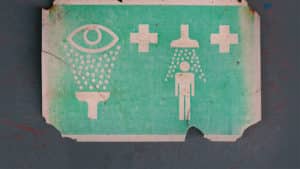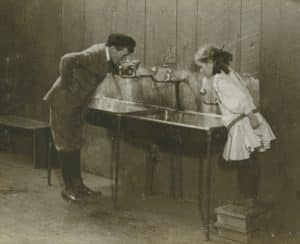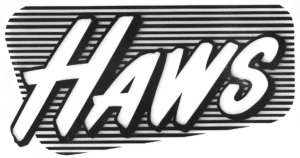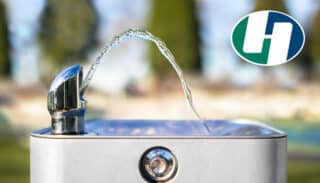Haws® exhibited at the recent International Facility Management Association (IFMA) World Workplace Conference & Expo October 18-20, 2017 in Houston, Texas. The World Workplace expo is an event geared toward learning and relationship-building within the facility management field. Attendees were able to see hundreds of Facility Management toys, tools, and resources from the leading names in FM solutions, including Haws. The attendees were able to see product demonstrations, attend informational sessions, and have one-on-ones with exhibitors. Haws was in a unique position to be the only Emergency Response Equipment and Hydration Products manufacturer at this event.
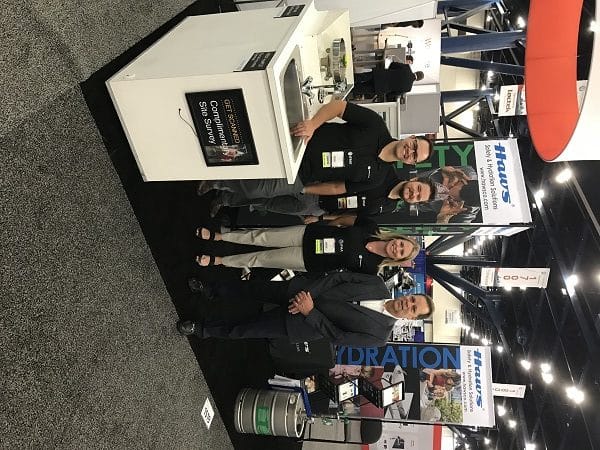
Haws AG also displayed at the A+A in Dusseldorf Germany. All aspects of safety, security, and health at work were brought together October 17-20, 2017 at the international trade forum that is A+A. Haws was able to present our emergency equipment and safety solutions to a global and highly qualified expert audience of decision-makers.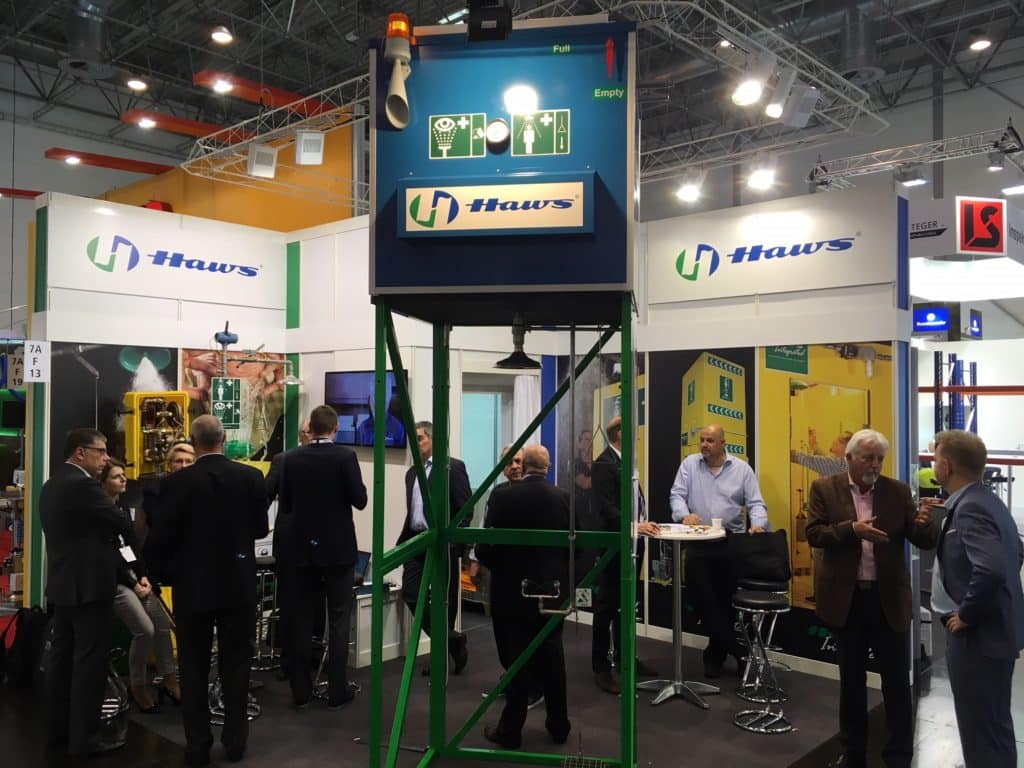
 Haws – Switzerland announced its expansion into new markets in the Middle East, increasing its investment and presence to come closer to partners in key markets. This new extension will provide immediate access for customers in the region to help Haws better serve their needs and to develop stronger partnerships with local entities.
Haws – Switzerland announced its expansion into new markets in the Middle East, increasing its investment and presence to come closer to partners in key markets. This new extension will provide immediate access for customers in the region to help Haws better serve their needs and to develop stronger partnerships with local entities.
Recently, Haws welcomed two regional sales team members, Sampeep Verma and Michael Alex, as Business Development Managers – Middle East. Mr. Verma and Mr. Alex split territory coverage with specific regions assigned.
“Over the last 30 years, we have made tremendous progress in establishing Haws as a significant player in the EMEA safety equipment marketplace and expanding our reach to local markets. As one of the fastest growing markets globally, Middle East is an important and strategic region to continue our growth plans,” said Urs Weder, Manager Director of Haws – AG.
The Haws team will be showcasing new products and services at the A+A International Trade Fair and Congress in Dusseldorf in October in Hall 7A at Booth F13.
For more information, visit www.Haws.ch or [email protected].
OSHA and ANSI Requirements for Eyewash and Safety Showers
[via LabManager.com]
ANSI standard Z358.1 is detailed in terms of defining what is appropriate for safety showers and eyewash stations.
As lab managers and employees, we know that many inorganic chemicals (such as the mineral acids and alkalis) are corrosive to the skin and eyes. Likewise we are aware that many organic chemicals (such as acid halides, phenols, and so on) are corrosive and often toxic. Yet we Safety Guys are continually shocked by laissez-faire attitudes toward the use and maintenance of basic safety equipment by lab personnel, and the resultant unnecessary injuries.
One extreme example we constantly recall is the tragic UCLA accident just a few years ago, which resulted in a fatality from chemical burns.1 And we recently noticed a post on the American Industrial Hygiene Association pages for Lab Safety Chemical Exposure Incidents, where improper use of an eyewash resulted in a trip to the emergency room.2
The worker was using a fluorescent stain in the cytogenetics lab and felt something splash into his eyes. He was not wearing safety goggles or glasses. (D’oh!) Long story shortened, he flushed his eyes at the nearest eyewash, but they remained irritated and began to swell shut, necessitating a visit to the emergency room. Back at work a few days later, he noticed a coworker using the same eyewash to clean glassware and stainless steel trays, which were left resting in the sink in a cleaning solution. (What?!)
What does OSHA say?
In 29 CFR 1910.151 Medical Services and First Aid, it states that “where the eyes or body of any person may be exposed to injurious corrosive materials, suitable facilities for quick drenching or flushing of the eyes and body shall be provided within the work area for immediate emergency use.”3 OSHA doesn’t provide more specifics regarding what constitutes “suitable” or how “immediate” is defined. So how do we know if we are meeting the intent of the law?
Fortunately, we have the American National Standards Institute (ANSI), and their consensus standard Z358.1, last updated in 2014. This ANSI standard is very detailed in terms of defining what is appropriate for safety showers and eyewash stations. In fact, OSHA uses this reference as a guide when inspecting facilities. So let’s review what is “recommended” for acceptable safety equipment.
Safety shower specs
Begin by checking your facilities for the proper hardware, as recommended by Z358.1. Rest assured that OSHA will, should one or more agents show up for an inspection. For safety showers, the shower head must be capable of flowing 20 gallons per minute (gpm) at 30 psi and producing a 20-inch diameter spray pattern at 60 inches above the surface where the user stands. The center of the sprayhead pattern should be at least 16 inches from any wall, door, or obstruction. It is recommended that the shower head be mounted between 82 and 96 inches off the floor, with the valve no higher than 69 inches.
Eyewash specs
Eyewash stations target just the eyes and therefore have a lower flow requirement. ANSI Z358.1 recommends a flow of 0.4 gpm also at 30 psi. The nozzles should be at least six inches from any obstruction and mounted between 33 and 45 inches above the floor. An eyewash gauge should be used to verify and test the flow pattern.
Requirements for both
Both safety showers and eyewash stations must be able to provide the recommended flow for at least 15 minutes. This usually translates into having the equipment plumbed in with hard connections to the water supply. For example, a quick calculation for the safety shower at 20 gpm yields 300 gallons needed. Self-contained or personal wash devices are allowed, but they are considered supplemental units that can provide immediate flushing while transiting to the permanent fixture.
If the local climate presents potential for freezing conditions, the equipment must be designed to avoid freezing or protected against that situation. Activation valves must open within one second and remain open until intentionally closed or turned off. It goes without saying that these safety devices should be constructed of corrosion-resistant materials.
The 2014 update to Z358.1 added two important criteria. The first is that the requirement for tepid water is now defined as having a temperature of between 60 and 100 degrees Fahrenheit (15 to 37 degrees Celsius). The second change addresses simultaneous operation for combination units. This means that if you have a drench shower combined with an eyewash station, both devices must provide adequate flows and be fully operable at the same time.
Finally and most importantly, consider the location of equipment. We know you have the 10-second rule etched into your brain, as that is the most critical element when it comes to safety showers and eyewashes. This means that travel to the unit should be under 10 seconds for all hazardous areas that need this equipment. This equals about 55 feet. In addition, the drench shower or eyewash must be on the same level as the hazard and have a clear path for travel. We recommend painting or marking the floor area underneath the shower to help keep it clear. Z358.1 also recommends equipment be installed in a brightly lit area and marked with a highly visible safety sign.
Maintenance and training
The last thing you want is to rush to the eyewash or shower, only to be drenched with nasty, sediment-laden water. ANSI recommends flushing all equipment weekly to verify proper flow, and clearing the plumbing of any deposits. If your facility does not have floor drains installed, remember to bring a large, plastic trash can to catch the water. The weekly flushing can also provide a great training opportunity to refresh the operation and travel paths for your employees.
If you want to find out about the ANSI/ISEA Z358.1 significant requirements, attend our free 1-hour webinar on September 21st, 2017.
Register now and become subject matter experts of your emergency eyewash and shower equipment including weekly and annual testing. Request a certificate of attendance after the webinar.
This free webinar will cover:
• ANSI/ISEA Z358.1 significant requirements
• Important 2014 revision highlights
• Compliance best practices
• Live Q&A
WHAT: All You Need to Know About ANSI Z358.1 Webinar
WHEN: September 21, 2017 from 10am-11am PT / 1pm-2pm ET
PRESENTER: Justin Dunn, Product Specialist/Trainer and Samantha Hoch, Marketing Strategist
HOW: Register for free
Attendees will receive these complimentary materials after the webinar:
• OSHA white paper
• Weekly and Annual ANSI Checklist
• Access to On-Demand Webinar
References
1. “tert-Butyllithium Claims Fellow Chemist at UCLA,” Chemistry Blog, January 19, 2009, http://www.chemistry-blog.com/2009/01/20/tert-butyllithium-claims-fellow-chemist-at-ucla/.
2. “Lab Safety Chemical Exposures Incidents,” American Industrial Hygiene Association, https://www.aiha.org/get-involved/VolunteerGroups/LabHSCommittee/Incident%20Pages/Lab-Safety-Chemical-Exposures-Incidents.aspx.
3. “Medical Services and First Aid,” US Department of Labor, Occupational Health and Safety Administration, https://www.osha.gov/pls/oshaweb/owadisp.show_document?p_table=STANDARDS&p_id=9806.
Six Emergency Response Habits Employees Need to Develop[via OHS Online]
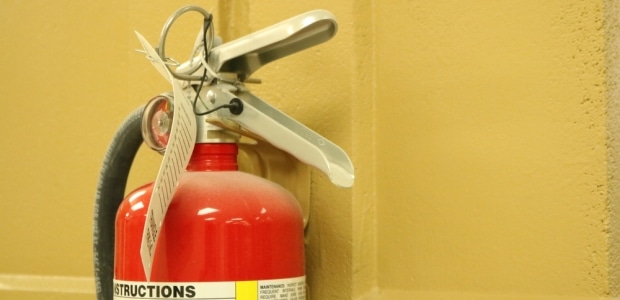 Six Emergency Response Habits Employees Need to Develop
Six Emergency Response Habits Employees Need to Develop
Employees need to refresh their training and have drills regularly so they will be able to rely on both their knowledge and their experience when emergencies happen.
By Karen D. Hamel Jul 01, 2017
If safety glasses, ear plugs, and steel-toed shoes are required in a production area, most employees who work there every day will eventually get into the habit of wearing them—especially when they receive coaching and positive reinforcement for remembering them. When the same start-up procedure is used at the beginning of the shift every day, it will become habitual, too.
Developing good safety habits can help reduce the chance of injuries. But what happens when there is an emergency or something out of the normal happens? Employees need to be just as prepared for the unexpected as they are for routine operations.
Training employees on the types of emergencies that could happen at or around the facility and what their role is during those emergencies are essential first steps in preparing them to respond appropriately. In some cases, the training may be even be required by OSHA regulations. Drills help everyone to apply what they have learned and actually walk through the response process so that it becomes familiar. The trick is having drills often enough that employees can develop emergency response habits.
Many professional responders agree that when there is an emergency, people’s actions don’t rise to the occasion—they fall back to their highest level of training. This happens because it is what they know, which makes them comfortable with the actions they need to take. That’s one of the reasons why even the most seasoned responders train and drill regularly, so that they know what they are going to do, which makes them ready to act instinctively when the need arises.
Given that even professional responders continually train and drill so that they will be prepared to act, it is wrong to assume that employees will instinctively know what to do when there is an emergency. Just like the firefighters, hazmat team, ambulance crew, or anyone else who may be called for assistance, employees need to refresh their training and have drills regularly so that they will be able to rely on both their knowledge and their experience when emergencies happen.
While it is probably not realistic to train every employee to be a contingency planner who is prepared for any time of emergency that could ever happen, each employee needs to specifically know what they are expected to do during different types of emergencies. Here are a few of the basic emergency response habits every employee can develop.
Exit Routes
Some facilities have multiple types of alarms, but for many facilities, an alarm means that something is wrong and everyone should evacuate. Each employee should know where the exit routes are and where the closest exit is. In addition, they should also be able to leave the building at least two different ways.
Be sure that evacuation drills allow employees to practice using both primary and alternative routes so that they are less likely to panic if they aren’t able to use their primary route in an emergency. Employees also should know where to go after they leave the building and whom to report to after they have evacuated.
Chemical Splashes
Under OSHA’s Hazard Communication Standard, hazardous chemical containers need to be properly labeled. The information on the label provides basic information about a chemical’s hazard. But when an employee has been splashed or unsafely exposed to a hazardous chemical, Safety Data Sheets (SDS) can provide more details to better help the affected employee. Knowing where to locate SDS and how to quickly find the one that is needed allows faster response and can lessen the extent of an injury.
Eyewash Stations and Drench Showers
In areas where corrosive chemicals are used, knowing how to get to eyewash stations and drench showers quickly can literally mean the difference between a first aid incident and a recordable injury with a long recovery time. Try blindfolding employees to see whether they can reach the nearest eyewash or drench shower in less than 10 seconds.
Fire Extinguishers
Most building codes require fire extinguishers; because they need to be checked monthly, most are fully charged and ready to use. However, whether or not employees should actually use them is sometimes a debate. Some facilities develop “do not use” policies because they feel that having an employee attempt to put out an incipient fire with an extinguisher is too big of a risk. Instead, they want their employees to pull the fire alarm and exit the building.
For facilities that do not have this type of policy, annual fire extinguisher drills can help them to remember to pull, aim, squeeze, and sweep. Be sure that these drills also include instruction on exiting the building if they have exhausted an extinguisher but have failed to put out the fire.
Spill Response
Most spills that happen in fixed facilities are small and can be safely cleaned up by employees in the immediate area. OSHA calls these “incidental spills.” When a spill creates an unsafe atmosphere or threatens the health of employees, it is most likely an “emergency spill” and needs to be cleaned up by employees who have been trained to OSHA’s Hazardous Waste Operations and Emergency Response (HAZWOPER) Standard.
All employees need to be taught how to quickly determine whether they are capable of cleaning up a spill or need to call in trained emergency spill responders. Volume, location, chemical properties, and levels of training are all factors that need to be taken into consideration when training employees how to determine whether a spill is incidental.
Injury Response and Reporting
Facilities that are not located in close proximity to hospitals or infirmaries need to have employees who are trained to administer first aid. While it is not necessary for every employee to receive first aid training, it is important for every employee to know what to do when someone is injured. At a minimum, every employee should know whom to report an injury to, as well as the process that will be used to investigate the root cause of an incident. Even elementary skills such as being able to retrieve the first aid kit or AED, or being able to meet the ambulance at the door and direct them to an injured employee, are helpful.
Few people ever reach the point where responding to emergencies is as instinctive as tying their shoes. But without regular emergency training and drills, response actions will never become familiar, let alone become habits. The more comfortable employees are with their roles in emergency response, the more likely they will be to follow established plans and avoid injuries.
This article originally appeared in the July 2017 issue of Occupational Health & Safety.
A Legacy of Innovation
By Stephanie Kilroy
One hundred and ten years ago, Luther Haws created a drinking solution that would become the first product for Haws Sanitary Drinking Faucet Company. Luther saw children drinking from a common cup on a playground at a public school; as a result, he invented a bubblerhead drinking faucet. This innovation sparked what would eventually be an enterprise business employing over two hundred employees globally.
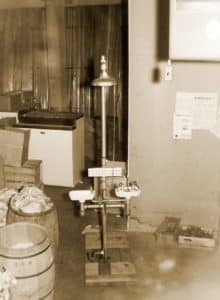
The product innovation initiated by Luther Haws continued across generations. In the 1940’s, maintenance men from an oil refinery in Richmond, CA would come by the Haws plant in Berkeley to shop for parts: round ball type bubblers, flow regulator and fittings. After inquiring about the need for these spare parts instead of completed models, Haws was informed that these parts were being used to build equipment to flush eyes. Employees at Haws sought to understand the needs of the customer and began making these emergency eyewashes and drench showers for them. This was the unofficial launch of Haws emergency equipment products; the earliest drawings date back to 1949.
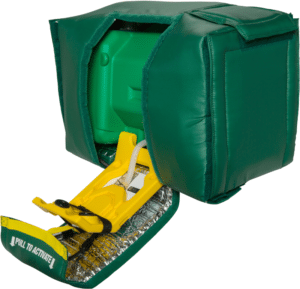 Haws employees have great pride in our innovative spirit which continues to thrive in 2017. One of Haws’ recent accomplishments has been the development of a professionalized R&D department. Under the leadership of Michael Joyer, new ideas are being generated regularly with many of these innovative ideas already introduced to the market. For example, the 7501T Tempered, Gravity-Fed, Portable Eyewash was one of the first products borne out of the R&D lab.
Haws employees have great pride in our innovative spirit which continues to thrive in 2017. One of Haws’ recent accomplishments has been the development of a professionalized R&D department. Under the leadership of Michael Joyer, new ideas are being generated regularly with many of these innovative ideas already introduced to the market. For example, the 7501T Tempered, Gravity-Fed, Portable Eyewash was one of the first products borne out of the R&D lab.
Haws is also called to innovate, not simply with new products, but in the way we do business. We are a stable, multigenerational family company, we are learning to change and improve processes. Haws employees are looking for internal efficiencies and ways in which we can best meet the needs of our customers. Recently, the Production team has developed a cross-training initiative aimed at flexing team work assignments to serve business demands.
These types of cross-functional, support teams are increasing and delivering impactful deliverables. In Q1, Marketing and Customer Service launched a Live Chat program on the Haws website to provide immediate access to customers. The Haws China website launch is another joint effort initiative intended to widen our global marketplace coverage. Launched in Q2 2017, this was a true collaboration between the Haws China and Corporate Marketing teams. And these are just a few of the examples of all the successful small and large activities that are helping drive change to redefine how we innovate, how we grow and how we foster a culture that is rewarding for all.
One hundred and ten years later, Haws continues our commitment to inventing, designing and manufacturing hydration products as well as standardized and customized emergency response products. With more than 8,000 distribution locations and 200 employees worldwide, we continually focus on quality, service, reliability and complete solution support. Headquartered in Sparks, Nevada, USA, Haws is globally represented with locations in Switzerland, Singapore, China, India, and Brazil. For more information on Haws, visit www.Hawsco.com.
TRADESHOW: Join us @ Safety & Health Expo in London. Your entry is on us!Haws Switzerland 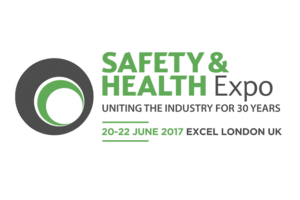 AG invites you to join us at the Safety & Health Expo June 20-22, 2017 at Excel London.
AG invites you to join us at the Safety & Health Expo June 20-22, 2017 at Excel London.
Safety & Health Expo, organized by UBM EMEA, is the UK’s leading global health and safety event, providing visitors with CPD accredited education, the latest health and safety products and services, valuable networking opportunities and much more.
Are you interested in attending? If so, we’d like to offer you a free badge to the expo! Click on this link and fill out your information.
Don’t forget to stop by our Stand No. M215 to learn more about our various product offerings including our EN and ANSI compliant emergency eyewash and shower equipment.
We hope to see you there!
Monday Tip: Emergency Eyewash “No-No’s”It is interesting to see what some facilities consider to be sufficient in regards to providing proper emergency shower and eyewash equipment. Below are just a few of these not-so-compliant “solutions”.
Not only does this risk potential fines from OSHA for not complying with the ANSI Z358.1 Standard, but it also put workers, students, etc. at risk of not having proper functioning equipment to use in the event of an emergency.
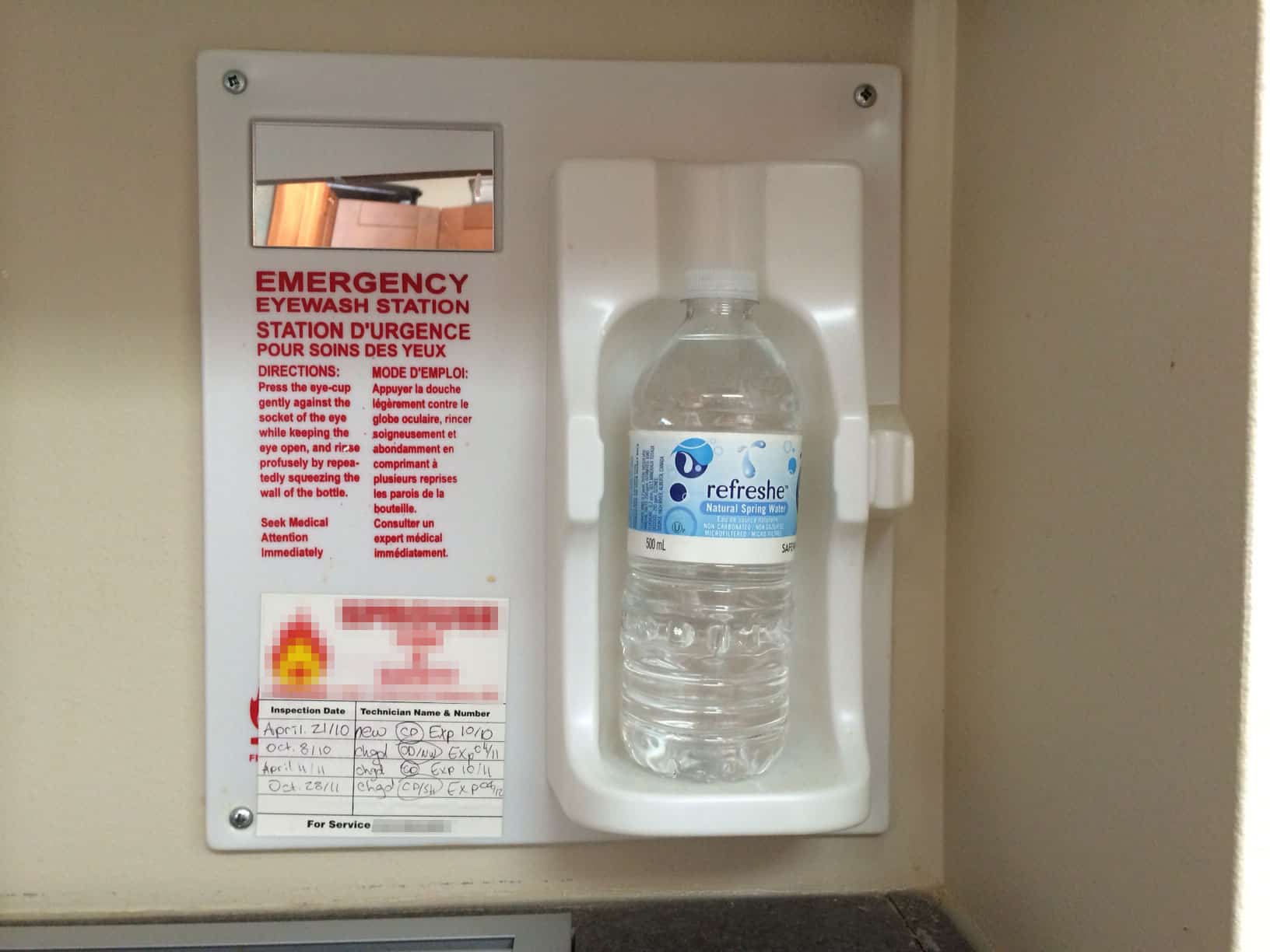
Ummm… not quite an equivalent.
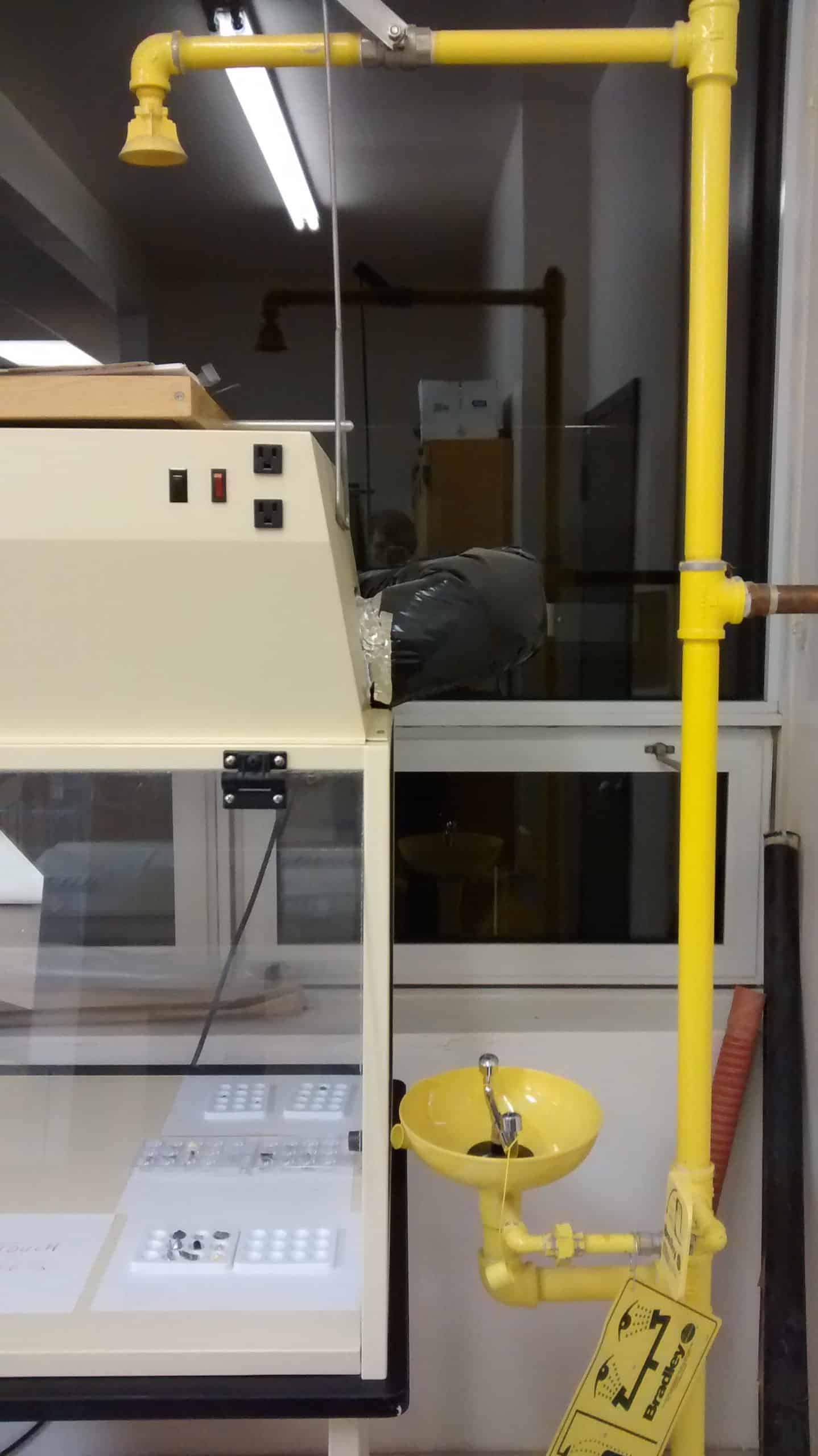
I wonder where the user is supposed to stand?
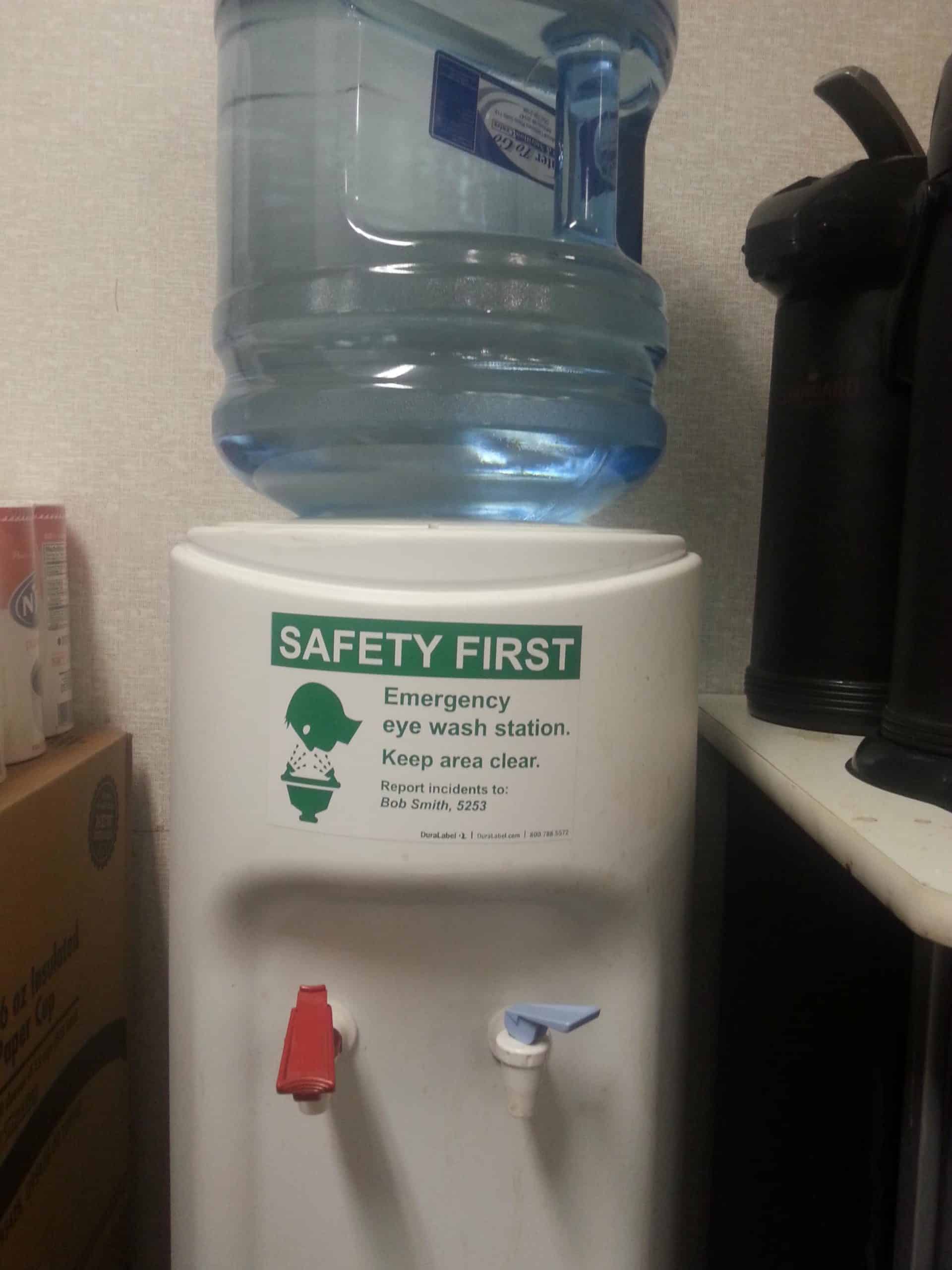
Ever seen a dual-functioning water cooler and eyewash station? Yeah, neither have we.
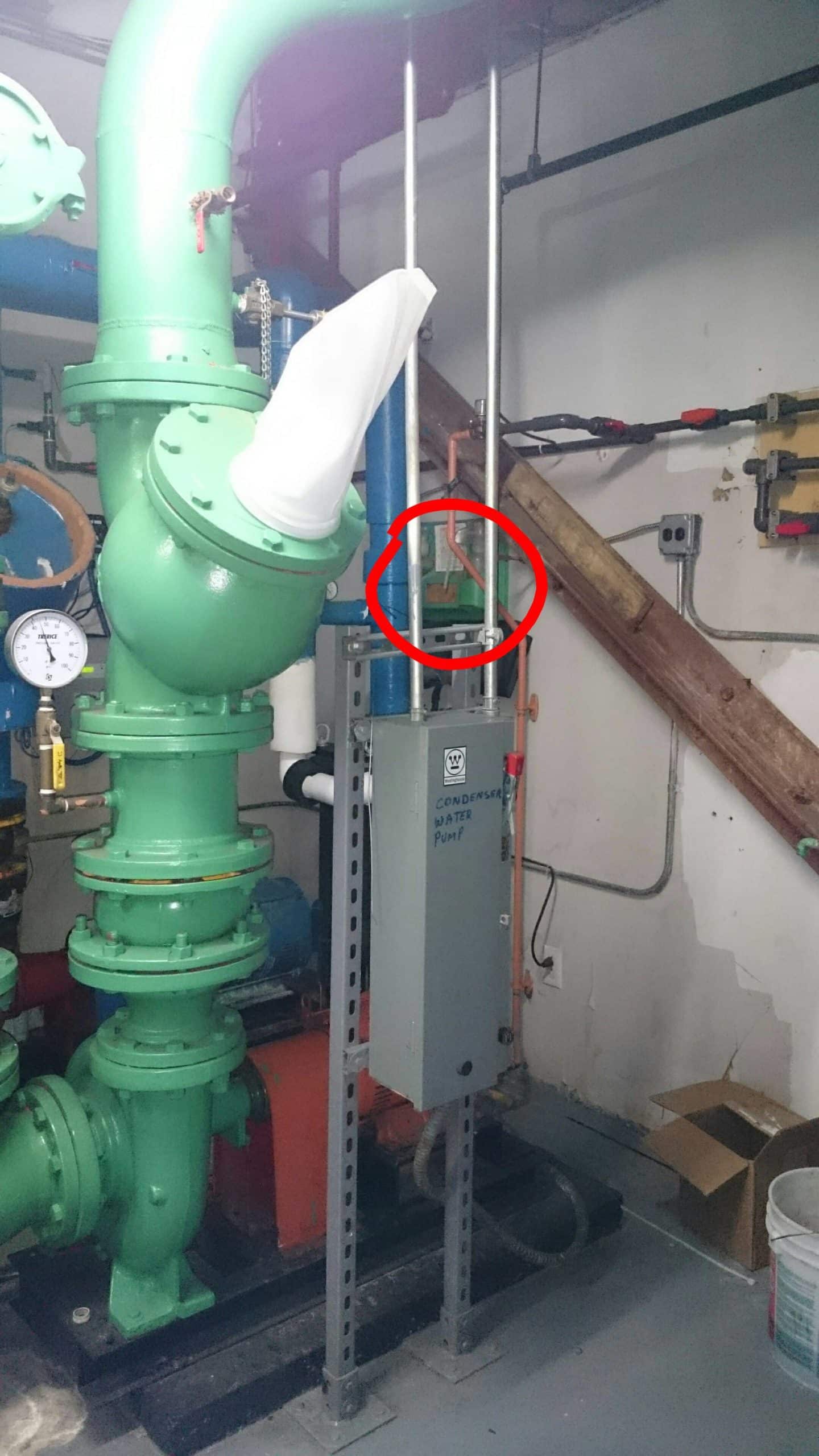
Can you spot the eyewash station?
Our tip: When installing an eyewash or shower unit, test out an emergency scenario to make sure you are giving a victim the required distance and access. Choose the path of least resistance to guarantee a victim the best treatment possible and to reduce potential injury damage.
For more information on ANSI installation requirements, visit www.hawsco.com/ANSI .
Case Study: Ethanol Production Facility Upgrades to Meet Compliance Workplace safety has been a focus from the very start at East Kansas Agri-Energy (EKAE). With awards from both Occupational Safety and Health (OSHA) and Kansas Department of Labor for exemplary safety systems and safety records, EKAE truly sets the standard for safety.
Workplace safety has been a focus from the very start at East Kansas Agri-Energy (EKAE). With awards from both Occupational Safety and Health (OSHA) and Kansas Department of Labor for exemplary safety systems and safety records, EKAE truly sets the standard for safety.
After coming across an advertisement for AXION Advantage® upgrade kits in the EHS Today Magazine, Safety staff followed up with online pricing research of the facility’s existing safety equipment brands.
To read the full case study, click here!
Why AXION MSR™ is truly a Doctor’s First ChoiceLearn from Ophthalmologist Dr. Robert S. Wolff, MD why the AXION MSR is the ideal eye/face wash for following standard healthcare protocols,
“I worked with the Haws Corporation® to launch AXION MSR emergency eye/face wash products. Haws recognized that traditional configurations for irrigating injured eyes were at odds with the protocols used by healthcare professionals. That is, traditional eyewash designs can actually sweep contaminants toward the inner corners of the eyes. AXION MSR eye/face wash features the only inverted flow streams specifically designed to operate in concert with standard healthcare protocols.“
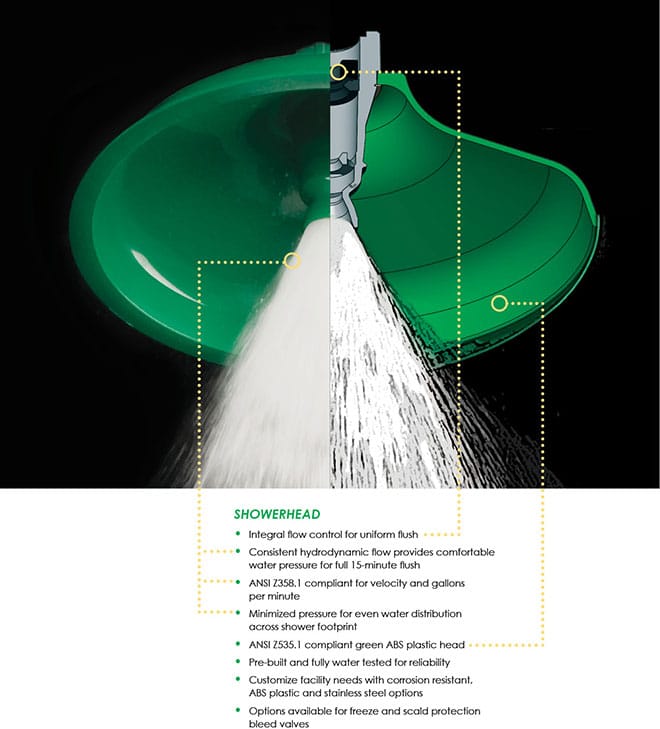 The ideal approach in chemical or particulate eye injuries is to sweep contaminants away from the interior of the eye. This method is practiced in doctor’s office and hospitals yet was not followed in the safety industry. Haws® recognized this need to protect the human eye and other internal organs and reversed the water flow to flush from the inside out for maximum effectiveness, injury reduction and enhanced victim comfort.
The ideal approach in chemical or particulate eye injuries is to sweep contaminants away from the interior of the eye. This method is practiced in doctor’s office and hospitals yet was not followed in the safety industry. Haws® recognized this need to protect the human eye and other internal organs and reversed the water flow to flush from the inside out for maximum effectiveness, injury reduction and enhanced victim comfort.
AXION products are available on the most popular configurations: combination showers as well as wall-mounted and pedestal eye/face washes. Get your medically superior response product from AXION MSR™
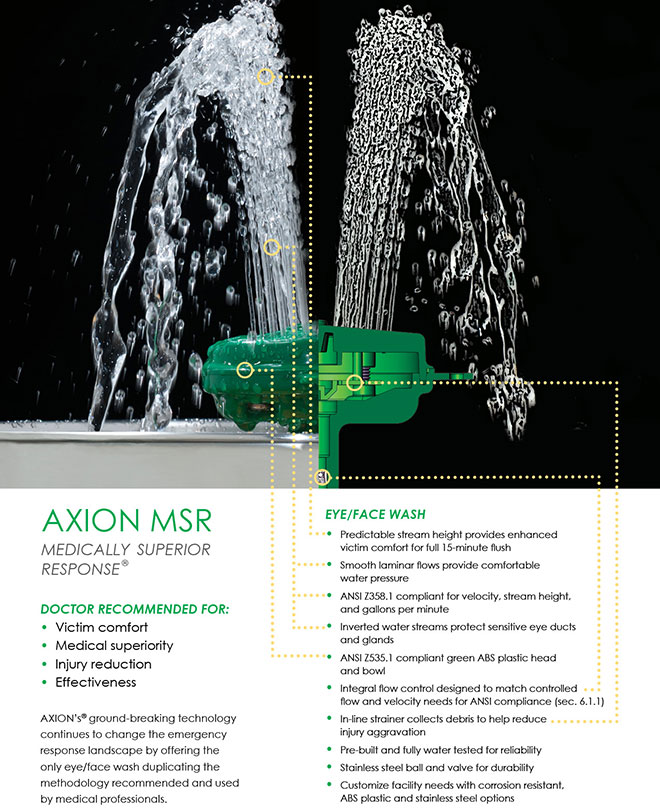
For more than a century, Monongahela Valley Hospital (MVH) has served Pennsylvania’s mid-Monongahela Valley with an emphasis on quality care and compassionate caring. The 226-bed, full-service health care facility maintains a staff of more than 1,000, making it the largest employer in the valley. The hospital remains steadfast in its commitment to meeting the needs of not only its employees, but also the thousands of patients that visit annually. 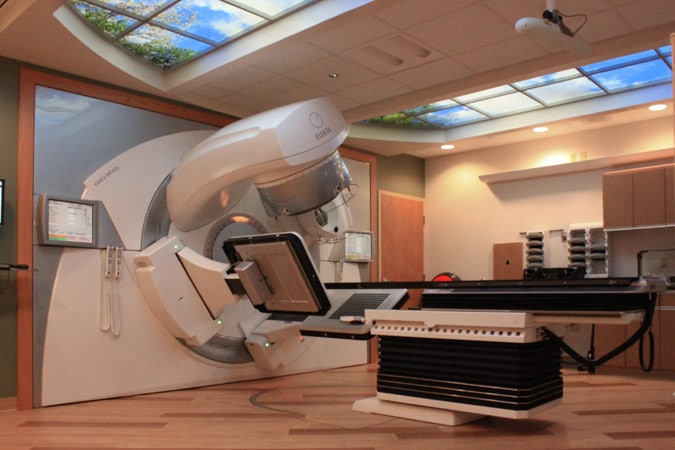 As part of a large renovation at MVH, one of the hospital’s laboratories relocated to a new facility. The project’s architects took full advantage of this opportunity to upgrade the lab’s safety equipment to ensure the safety of the hospital staff. They wanted reliable products that worked on several levels – efficiency, innovation, compact size and ease of use – while also meeting stringent OSHA and ANSI standards.
As part of a large renovation at MVH, one of the hospital’s laboratories relocated to a new facility. The project’s architects took full advantage of this opportunity to upgrade the lab’s safety equipment to ensure the safety of the hospital staff. They wanted reliable products that worked on several levels – efficiency, innovation, compact size and ease of use – while also meeting stringent OSHA and ANSI standards.
After evaluating the scope of emergency products on the market, both the Haws® AXION® MSR eye/face wash and AXION MSR combination eye/face wash and shower proved ideal. As leading safety products, they fell perfectly in line with the hospital’s commitment to quality and staff/patient satisfaction. A revolutionary inverted flow design makes the AXION MSR eye/face wash the only product on the market consistent with EMT and emergency room protocols, while the combination eye/face wash and shower offers a hydrodynamic design with regulated water flow that ensures maximum effectiveness in an emergency situation. Integral flow controls and easy activation are additional standout features.
In selecting the Haws products, MVH offers a response that concentrates on victim comfort while exceeding the ANSI Z358.1 standard requirements. “The units work well,” and staff has found them “easy to start, especially… in a hurry,” says MVH Laboratory Supervisor, Betty Ritzer. The eye/face wash has been used once, with very positive feedback, and Ritzer’s weekly maintenance checks have her sold on the safety equipment’s quality. AXION’s ground-breaking technology continues to change the emergency response landscape by offering the only eye/face wash duplicating the methodology recommended and used by medical professionals. The AXION MSR eye/face wash and shower provide superior safety technology for use in labs, schools and healthcare offices and are available in a variety of configurations and install options. All AXION MSR products are certified by CSA to meet ANSI Z358.1.
To download or print the case study, click here.
Case Study: Aquatics Center for the City of St. AlbertEye safety can be overlooked in environments that do not often deal with hazardous materials. In the circumstance of an aquatics club, some employees are exposed to pool cleaning chemicals that are dangerous to the eyes if exposed. Looking to transition away from personal eyewash bottles, the Aquatics Department for the City of St. Albert in Alberta, Canada led their eyewash needs to the AXION® eyePOD®.
The design of the AXION eyePOD blends gracefully with the design of the first aid center of the Aquatics Center. The staff are thrilled that the AXION eyePOD is easy to use and has an internal temperature gauge that will shut off the water once it reaches 100° F. In addition, the staff no longer fears being exposed to calcium hypochlorite or sodium hypochlorite. The AXION eyePOD proved to be the perfect first aid solution.
Read more about the The Aquatics Department for the City of St. Albert in Alberta, Canada’s eyePOD.
To learn more visit AXION eyePOD.
